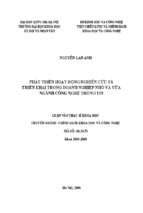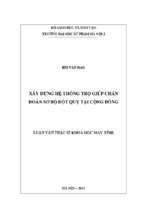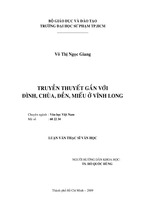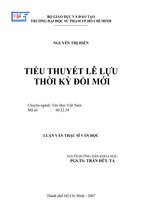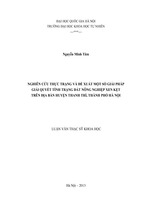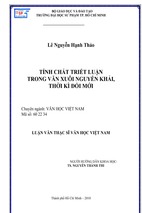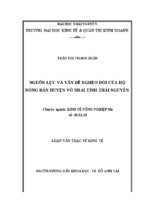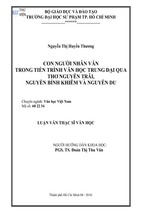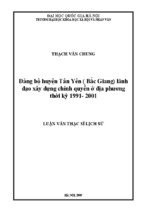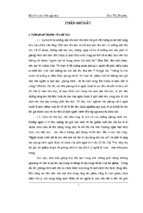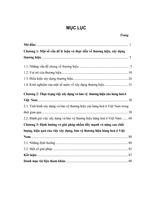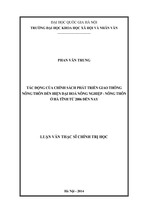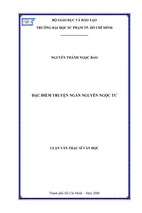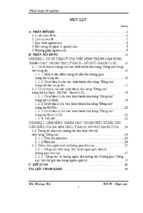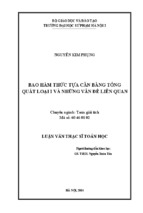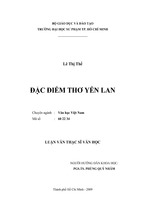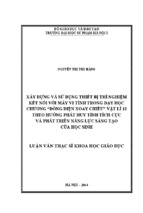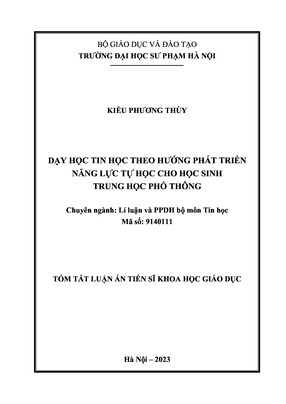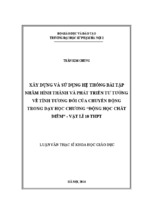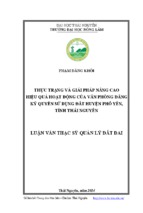The phenomenon “code switching”, a very familiar type of language contact, has undergone various periods investigated from many different perspectives such as linguistics, pragmatics, etc. and in both written and spoken contexts. Besides, code switching is widely studied in foreign countries, but very little attention has been paid to in Vietnam while this phenomenon has been very popular for so many decades. There is hardly any study of this social-linguistic phenomenon in any pair of languages of the Vietnamese language with Russian, or with French, or with Chinese, and particularly with English, in any environment such as in the classroom, in translating, in speaking, etc. As a result, this paper seeks to explore the popularity of English- Vietnamese code switching in VNU, and the attitude of these students to this phenomenon. Therefore, the paper begins by reviewing the current literature related to code switching in comparison with some main related concepts such as code mixing and borrowing as well as the origination and reasons of code switching. The investigation then involved the participation of a large sample of 90 students coming from six different universities in the VNU responding to the carefully designed questionnaire. The analysis of the collected data demonstrated some very interesting findings, for example the mismatches between frequency of using code switching and the attitude towards it, followed by the in-depth discussion about newly-arisen reasons which motivate these students to use it or not such as causing humor, transmitting certain messages, etc. In conclusion, the contribution this study has to find out the frequency and attitude of the youth, specifically students of VNU towards code switching from the English language into the Vietnamese language
A cross cultural study of the attitude of VNU students towards English- Vietnamese code switching
---------------------------------------------------------------------------------------------------------------------------
VIETNAM NATIONAL UNIVERSITY, HANOI
UNIVERSITY OF LANGUAGE AND INTERNATIONAL STUDIES
FACULTY OF ENGLISH LANGUAGE TEACHER EDUCATION
GRADUATION PAPER
A cross cultural study of the attitude of VNU students
towards English- Vietnamese code switching
Supervisor: Ngo Huu Hoang, DR.
Student:
Nguyen Thi Phuc
Class:
QH 08. F1. E7
HANOI – 2012
ii
A cross cultural study of the attitude of VNU students towards English- Vietnamese code switching
---------------------------------------------------------------------------------------------------------------------------
o
n
n d n:
n
n
Sinh viên:
QH 08. F1. E7
HANOI – 2012
iii
o n
c
A cross cultural study of the attitude of VNU students towards English- Vietnamese code switching
---------------------------------------------------------------------------------------------------------------------------
ACCEPTANCE PAGE
I hereby state that I (Nguyen Thi Phuc, Group 08.1.E7), being a candidate for
the degree of Bachelor of Arts (TEFL) accept the requirements of the College relating
to the retention and use of Bachelor’s Graduation Paper deposited in the library.
In terms of these conditions, I agree that the origin of my paper deposited in the
library should be accessible for the purposes of study and research, in accordance
with the normal conditions established by the librarian for the care, loan or
reproduction of the paper.
Signature of student
Nguyen Thi Phuc
iv
A cross cultural study of the attitude of VNU students towards English- Vietnamese code switching
---------------------------------------------------------------------------------------------------------------------------
ACKNOWLEDGEMENTS
It is my pleasure to thank those who made this graduation paper possible.
Firstly, I owe my deepest gratitude to my supervisor, Dr. Ngo Huu Hoang,
whose encouragement, guidance and support enabled me to develop an understanding
of the subject. Especially, it was him who supported me with valuable materials,
precious ideas, and sincere share from his own experience.
Secondly, my thank also goes to MA. Le Phuong Anh, who supported me at the
very initial steps of the research in her theoretical lectures on research and shared with
me her great attempt during a long period of sleepless nights which motivated me so
much.
Thirdly, this thesis would not have been possible without the enthusiastic
encouragement from my beloved ones in my family during a long period to finish the
paper. In addition, I am heartily thankful to my close friends and my classmates, who
gave me easy access to the surveyed participants in six universities and continuous
comments during the whole process of doing the study.
Finally, it is an honor for me to acknowledge the facilitation and remind from
the Department so that my study could be kept at appropriate pace. Last but not least, I
offer my blessings to all of those who supported me in any respect during the
completion of the study.
Nguyen Thi Phuc
v
A cross cultural study of the attitude of VNU students towards English- Vietnamese code switching
---------------------------------------------------------------------------------------------------------------------------
ABSTRACT
The phenomenon “code switching”, a very familiar type of language contact,
has undergone various periods investigated from many different perspectives such as
linguistics, pragmatics, etc. and in both written and spoken contexts. Besides, code
switching is widely studied in foreign countries, but very little attention has been paid
to in Vietnam while this phenomenon has been very popular for so many decades.
There is hardly any study of this social-linguistic phenomenon in any pair of languages
of the Vietnamese language with Russian, or with French, or with Chinese, and
particularly with English, in any environment such as in the classroom, in translating,
in speaking, etc.
As a result, this paper seeks to explore the popularity of English- Vietnamese
code switching in VNU, and the attitude of these students to this phenomenon.
Therefore, the paper begins by reviewing the current literature related to code
switching in comparison with some main related concepts such as code mixing and
borrowing as well as the origination and reasons of code switching. The investigation
then involved the participation of a large sample of 90 students coming from six
different universities in the VNU responding to the carefully designed questionnaire.
The analysis of the collected data demonstrated some very interesting findings, for
example the mismatches between frequency of using code switching and the attitude
towards it, followed by the in-depth discussion about newly-arisen reasons which
motivate these students to use it or not such as causing humor, transmitting certain
messages, etc.
In conclusion, the contribution this study has to find out the frequency and
attitude of the youth, specifically students of VNU towards code switching from the
English language into the Vietnamese language.
vi
A cross cultural study of the attitude of VNU students towards English- Vietnamese code switching
---------------------------------------------------------------------------------------------------------------------------
TABLE OF CONTENTS
ACCEPTANCE PAGE ................................................................................................ iv
ACKNOWLEDGEMENTS .......................................................................................... v
ABSTRACT................................................................................................................... vi
LIST OF TABLES, CHARTS, AND ABBREVIATIONS ......................................... x
CHAPTER I: INTRODUCTION ............................................................................... 12
1.1. Rationale for the study........................................................................................ 12
1.2. Aims of the study ................................................................................................ 14
1.3. Scope of the study............................................................................................... 14
1.4. Significance of the study .................................................................................... 15
1.5. Design of the study ............................................................................................. 15
CHAPTER II: LITERATURE REVIEW ................................................................. 16
2.1. Previous studies .................................................................................................. 16
2.2. Key terms and issues related to the phenomenon of code switching ................. 17
2.2.1.
What is code switching? ............................................................................ 17
a.
Definition of code switching ..................................................................... 17
b.
Code switching vs. borrowing vs. mixing ................................................. 19
2.2.2.
Why code switching? ................................................................................ 20
2.2.3.
When does code switching occur in the world and in Vietnam? .............. 22
a.
When does the code switching occur in the world? .................................. 22
b.
When does the code switching occur in Vietnam? ................................... 23
CHAPTER III: METHODOLOGY........................................................................... 26
3.1. Informants ........................................................................................................... 26
3.2. Data collection instruments ................................................................................. 28
3.3. Procedures of data collection .............................................................................. 31
3.4. Procedures of data analysis ................................................................................. 32
CHAPTER IV: FINDINGS AND DISCUSSIONS ................................................... 33
vii
A cross cultural study of the attitude of VNU students towards English- Vietnamese code switching
---------------------------------------------------------------------------------------------------------------------------
4.1. Findings .............................................................................................................. 33
4.1.1. Frequency of contacting code switching in VNU. ........................................ 33
4.1.1.1 Group 1 (Utterance 1-8) .............................................................................. 33
a.
Frequency of contacting code switching in ULIS, VNU. ......................... 33
b.
Comparison on frequency of contacting code switching among ULIS,
USSH, UEB & SL, and HUS & UET ....................................................... 34
4.1.1.2. Group 2 (Utterance 9-14) ........................................................................... 35
a.
Frequency of contacting code switching in ULIS, VNU .......................... 35
b.
Comparison on frequency of contacting code switching among ULIS,
USSH, UEB & SL, and HUS & UET ....................................................... 36
4.1.1.3. Group 3 (Utterance 15-20) ......................................................................... 37
a.
Frequency of contacting code switching in ULIS, VNU. ......................... 37
b.
Comparison on frequency of contacting code switching among ULIS,
USSH, UEB & SL, and HUS & UET ....................................................... 38
4.1.1.4. Comparison on frequency of contacting CS at different years at VNU. ... 39
a.
Comparison on frequency of contacting CS at 2 first years at VNU. ....... 39
b.
Comparison on frequency of contacting code switching among ULIS,
USSH, UEB & SL, and HUS & UET ....................................................... 41
4.1.2. Frequency of using code switching in VNU .................................................... 43
4.1.3. Attitude of VNU students towards code switching and towards contribution of
code switching into English learning. ........................................................................ 43
4.1.3.1. Attitude of VNU students towards contribution of code switching into
English learning. ..................................................................................................... 43
4.1.3.2. Attitude of VNU students towards code switching. .................................. 44
a.
ULIS .......................................................................................................... 44
b.
USSH ......................................................................................................... 46
c.
UEB & SL ................................................................................................. 47
d.
HUS &UET ............................................................................................... 48
viii
A cross cultural study of the attitude of VNU students towards English- Vietnamese code switching
---------------------------------------------------------------------------------------------------------------------------
4.2. Implication ......................................................................................................... 50
4.3. Application ......................................................................................................... 51
CHAPTER V: CONCLUSION .................................................................................. 53
5.1. Major findings of the research ............................................................................ 53
5.2. Limitations of the research ................................................................................. 53
5.3. Recommendation for further study ..................................................................... 54
REFERENCES ............................................................................................................ 55
APPENDICE ................................................................................................................ 58
Appendix 1: Vietnamese survey questionnaire .......................................................... 58
Appendix 2: English survey questionnaire ................................................................ 62
ix
A cross cultural study of the attitude of VNU students towards English- Vietnamese code switching
---------------------------------------------------------------------------------------------------------------------------
LIST OF TABLES, CHARTS, AND ABBREVIATIONS
Tables
Table 1: Classification of participants based on the number of years Ss have studied at
their universities………………………………………………………………………19
Table 2: Areas of investigation in each part of the questionnaires…………………..20
Table 3: Initial step of data analyzing…………………………...……………………24
Charts
Chart 1: Frequency of contacting “dead” CS in ULIS (Group 1)……………………26
Chart 2: Comparison on frequency of contacting “dead” CS among different
universities in VNU (Group 1)……………………………………………………….27
Chart 3: Frequency of contacting “living” CS in ULIS (Group 2a)…………………28
Chart 4: Comparison on frequency of contacting “living” CS among different
universities in VNU (Group 2a)……………………………………………………...29
Chart 5: Frequency of contacting “living” CS in ULIS (Group 2b)…………………30
Chart 6: Comparison on frequency of contacting “living” CS among different
universities in VNU (Group 2b)……………………………………………………....31
Chart 7: Comparison on frequency of contacting CS at 2 first years at VNU………..32
Chart 8: Comparison on frequency of contacting CS at 2 last years at VNU………...34
Chart 9: Choice of students themselves in using CS in their conversations……….....36
Chart 10: Contribution of CS towards English learning………………………….…..37
Chart 11: Attitude of ULIS Ss towards CS…………………………………………..38
Chart 12: Attitude of USSH Ss towards CS………………………………………….39
x
A cross cultural study of the attitude of VNU students towards English- Vietnamese code switching
---------------------------------------------------------------------------------------------------------------------------
Chart 13: Attitude of UEB & SL Ss towards CS…………………………………….40
Chart 14: Attitude of HUS & UET Ss towards CS…………………………………..41
Abbreviations
Name
Meaning
CS
Code switching
FELTE
Faculty of English Language Teacher Education
HUS
University of Science
SL
School of law
Ss
Students
UEB
University of Economics and Business
UET
University of Engineering and Technology
ULIS
University of Languages and International Studies
USSH
University of Social Sciences and Humanities
xi
A cross cultural study of the attitude of VNU students towards English- Vietnamese code switching
---------------------------------------------------------------------------------------------------------------------------
CHAPTER I: INTRODUCTION
1.1.
Rationale for the study
Living in the society of globalization, a shorter and shorter distance among
countries can lead to the “integration” in culture and language. It is the result of
globalization in a new era. The global changes directly affect the way we do and think
and the language usage we choose and use. It seems that the phenomenon of language
which goes together with the globalization is English. It diffuses the other languages and
becomes the planet‟s language for commerce, technology, and also empowerment. It is
proved by a considerable increase in the number of non-native speakers and the English
oriented Internet language. Vietnam has also accepted English as a language tool to
cooperate with many other countries in the world to promote the economy. Besides,
English is also diffused by these languages as a result of combination between different
cultures. For instance, there exist so many types of English such as Canadian English,
Indian English, African English, British English, American English, etc. Various forms of
English in different countries will be changed partly in the way of pronunciation,
meaning aspects and so on. In Vietnam, each one receives English in his or her own way
which is known as “Vietnamized English”. If people use English to communicate, there
will be nothing to discuss because it is very normal. However, there are various ways of
using it, and the most interesting point is that there is a code switch between English and
Vietnamese.
Indeed, in the daily life, it is easy to come up with the case of a Vietnamese
schoolboy using his mother tongue to talk with his parents and his teachers, but using
many other kinds of languages to chat with his friends. Also, it is common to realize that
people, old and young, are so familiar with English words such as OK, hello, bye bye,
dollar, or the internet, and so on. Whether being low-educated people or blue collars, to
12
A cross cultural study of the attitude of VNU students towards English- Vietnamese code switching
---------------------------------------------------------------------------------------------------------------------------
some extent they have their own way of using or contacting English. Those who are loweducated such as farmers can also have access to English words, and even use these
words naturally without awareness. For example, they can go to the store and ask the
storekeeper to sell them a Coca-cola bottle, by this way, the English word “Coca-cola” is
spoken naturally by a famer. Those who are white collars are very familiar with internet
words such are download, email, format, etc. Even those who are illiterate can go to the
public places and see English words, taking “WC” as an example, or follow a television
program and catch up with English words such as Gala, show, video, and so on. In the
other case, it is commonly believed that a newly-born child can also be able to speak
English before speaking his or her native language. The very initial English words spoken
by children are bye bye, ma ma, etc. However, sometimes there is a change in the way of
using, writing, and pronouncing these words. Many English words have been modified to
be suitable with Vietnamese phonological structures. For example, Vietnamese people
tend to write or pronounce like “ô-kê” instead of ok, “bai bai” instead of “bye bye”, “Cô
ca cô la” instead of “Coca- cola”, “sô” instead of “show”, or “vi đê ô” instead of
“video”, “in tờ nét” instead of “internet”, and so many other examples which cannot be
listed all here, but will be introduced thoroughly when following the next parts of the
study. Obviously, regardless of different ways and purposes of using the English
language, a switch between two codes (two languages) of English and Vietnamese has
happened. This is the most powerful motivation for the researcher to make a great
attempt to investigate the phenomenon of code switching from English into Vietnamese.
Although series of studies regarding code switching have been carried out, they
are only found commonly between two other codes, for example, English with Spanish,
English with Chinese, etc. or popularly found by the foreign researchers such as Peter
Auer (1998), Bokamba, E. (1989), Sondergaard, B. (1991), Elena, G. (2008), and so on.
Addressing the need of investigation on the context of universities, “A cross cultural
study of the attitude of VNU students towards English- Vietnamese code switching” has
13
A cross cultural study of the attitude of VNU students towards English- Vietnamese code switching
---------------------------------------------------------------------------------------------------------------------------
been undertaken. The researcher, with this study, hopes to bring a real picture of what is
going on in the act of changing codes between English and Vietnamese of VNU students,
of what are the reasons for switching, of the awareness and the attitude of VNU students
towards this phenomenon. Following the whole study, the answers to these questions will
be given with the entire attempt of the researcher to analyze and discuss the data.
1.2.
Aims of the study
First of all, the paper is to explore the current studies which are relevant to code
switching to find out what have been exploited. Next, a closer look would be taken at the
phenomenon of code switching in Vietnam.
In brief, the study supports to address the two following research questions:
a. How often do VNU students use English- Vietnamese code switching?
b. What are the attitudes towards code switching in the perspective of VNU students?
1.3.
Scope of the study
The present study focuses on the code switching phenomenon from English to
Vietnamese in daily conversation of students coming from Vietnam national university
and the analysis of the data collected from the survey questionnaire on frequency and
attitude of VNU students towards code switching.
Also, it must be noted that the major and the number of years that students have
studied at their universities may affect the speaker‟s choice of using code switching or
not. Therefore, these factors will be thoroughly based on so that the comparison among
different universities and the comparison among different years are much clearer.
In addition, the researcher‟s attention is paid to the contribution of EnglishVietnamese code switching into studying English and subjects which are required to learn
in English.
Not to be generalized for all walks of life, the researcher hopes that its results can
help provide certain implications for the use of code switching in teaching and learning
14
A cross cultural study of the attitude of VNU students towards English- Vietnamese code switching
---------------------------------------------------------------------------------------------------------------------------
English as well as in translation. Besides, the paper can contribute into Vietnamese
people‟s awareness, especially the people who study foreign languages and who can
communicate in two or more languages about this phenomenon to make use of it.
1.4.
Significance of the study
The study has great significance in both the theory and the practice.
In terms of theory, the study helps the researcher equip with some issues related
to linguistics and culture. For example, it gives the researcher a chance to study more
about very basis but necessary phenomena such as code switching, code-mixing, and
borrowing. Besides, a comparison is made among these kinds of language contact which
deepens in the researcher‟s mind an overall picture of code switching. It also helps the
researcher to be fully aware of the close relationship between language and culture. It
turns out that the “distance” in languages is similar to that in cultures. The shorter the
distance between two languages is, the shorter the distance between two cultures is.
In terms of practice, firstly, this study helps the researcher to recognize the context
of using English in particular, and the influence of English upon the other languages.
Moreover, the investigated topic offers the researcher a chance to discover the positive
and negative result of the English- Vietnamese code switching. This will contribute into
the teaching methods or translation methods, as well as studies in the near future.
1.5.
Design of the study
This study is structured in five main parts as follows:
Chapter one (Introduction) includes rationale, aims of the study, the scope of the
study, the significance of the study, and the design of the study.
Chapter two (Literature review) - Overview of culture and the phenomenon of
code switching- provides the key theoretical concepts that the study is based on and the
current discussions related to the study.
15
A cross cultural study of the attitude of VNU students towards English- Vietnamese code switching
---------------------------------------------------------------------------------------------------------------------------
Chapter three (Methodology) describes the informants, the data collection
instruments as well as the procedures of data collection and data analysis.
Chapter four, also the main part of the study, (Findings and discussions) gives a
thorough answer to the aforementioned research questions. Besides, the chapter offers an
in-depth discussion of the result of the study. The discussion will be based on the
descriptive, quantitative and qualitative analysis of the data.
Chapter five (Conclusion) includes the overall comments and summarizes the
most important findings of the study. Moreover, this chapter also presents some
limitations, implications of the study, applications of the study, and the recommendation
for the further research.
CHAPTER II: LITERATURE REVIEW
Overview of culture and the phenomenon of code switching
This chapter will provide a brief overview of the literature on the research topic,
thus lay the theoretical basis for the whole study. Firstly, a critical explanation of key
concepts such as code switching, code mixing, and borrowing will be given. Then,
related documents concerning the reasons for code switching, the history of code
switching, and the spread of code switching in Vietnam will be revised. The research
gaps will be discovered and hence, justify the implementation of this study.
2.1.
Previous studies
Since code switching catches a lot of attention from scholars all over the world, a
multitude of studies have been done. However, regardless of the huge number of studies
on code switching, this phenomenon has still been a “promising land” for those who are
interested in the language contact. Based on the chorological process, the researcher only
looks for some outstanding studies so that the remaining chapters of the study have the
basis background knowledge to base on. In 1984, Peter Auer did a study which was
“Bilingual conversation”. Then, in 1991, the study “switching between seven codes
16
A cross cultural study of the attitude of VNU students towards English- Vietnamese code switching
---------------------------------------------------------------------------------------------------------------------------
within one family- A linguistic resource” was implemented by Sondergaard, B. Two years
later, “Social motivations of code switching” was conducted by Myers-Scotton, Carol. In
1995, we had “One speaker, two languages” written by Lesley, M. & Pieter. M. In 1998,
the very famous scholar Peter Auer continued to study “From code switching via
language mixing for fused lects”. Two years after that, Peter, M. took a close look at
Bilingual speech: A typology of code-mixing. In the same year 2008, “Code-switching:
Grammatical, Pragmatic and Psycholinguistic Aspects. An overview paper.” by Elena, G.
and “Understanding mixed code and classroom code- switching. Myths and realities.”Li,
D. were conducted. Next, in 2010, the group of authors Vu, J. A., Bailey, A.L., & Howes,
C. did a study, namely “Easy cases of code switching in Mexican-Heritage children:
Linguistic and sociopragmatic considerations”. The recent study which needs to be
mentioned is “Code-switching in English and science classroom. More than Translation”
by Then, D. & Ting, S. (2011).
2.2.
Key terms and issues related to the phenomenon of code switching
2.2.1. What is code switching?
a. Definition of code switching
The study of code switching has captured many concerns of the researchers,
especially the students of bilingualism because of so many debates, discussions as well as
deliberations about this phenomenon.
The first explicit mention of code switching is found by Vogt (1954 cited in Auer,
1998, p.5) “code switching in itself is perhaps not a linguistic phenomenon, but rather a
psychological one, and it causes obviously extra- linguistic. But bilingualism is of great
interest to the linguist because it is the condition of what has been called inference
between languages”. However, the researcher is in complete agreement with Auer (1998,
p.368) that such a way of defining code switching did not have a uniform meaning.
However, at the other side, this assumption proves that code switching is not only natural,
but common; moreover, all languages experience language contact, and the contact
17
A cross cultural study of the attitude of VNU students towards English- Vietnamese code switching
---------------------------------------------------------------------------------------------------------------------------
phenomena, including language alternation, are an important element of language
change. Besides, code switching is referred to by Haugen (1956, cited in Auer, 1998,
p.32) as a situation in which a “bilingual introduces a completely unassimilated word
from another language into his speech”. By this way of defining code switching, Haugen
considered it a linguistic action, and this was actually the foundation of the most current
research on bilingual conversation.
Myers-Scotton (1993, p.3) stated about Code switching as “the selection by
bilinguals or multilinguals of forms from an embedded variety (or varieties) in utterances
of a matrix variety during the same conversation". Meanwhile, Elena G.(2008, p.6)
defines code switching as the alternation of two languages within a single discourse,
sentence or constituent, which is balanced bilinguals is governed by both extra- linguistic
and linguistic factors. Both these ways of defining code switching seem to incline too
much towards the perspective of linguists and rather difficult to be grasped.
Code switching in written discourses such as news, novels, and advertisements has
also been paid a lot of attention. However, the researcher thinks that code switching in
written language is usually prepared and repeatedly rehearsed before it is released to
public; therefore, the act of switching code here cannot be as natural and interesting as
verbal code switching which are mostly spontaneously and unconsciously.
However, the definition which the researcher chooses to follow for the whole
study is taken from Longman dictionary of language teaching and applied linguistics
(Richards and Platt, 1992, p.57-58) Firstly, code is defined as “a term which is used
instead of language, speech variety, or a dialect”. People use “code” when they want to
stress the uses of a language or language variety in a particular community. Secondly,
code switching is defined as “a change by a speaker or writer from one language or
language variety to another one”. Code switching can take place in a conversation when
one speaker uses one language and the other speaker answers in different language.
18
A cross cultural study of the attitude of VNU students towards English- Vietnamese code switching
---------------------------------------------------------------------------------------------------------------------------
Moreover, a person may start speaking one language and then change into another one in
the middle of their speech, or sometimes even in the middle of a sentence.
b. Code switching vs. borrowing vs. mixing
Code switching is distinct from other language contact phenomena, such as
borrowing, pidgins, and code mixing. Because the phenomenon of pidgin is defined quite
clearly as a language which develops as a contact language when groups of people who
speak different languages try to communicate with one another on a regular basis, the
researcher will not make a comparison with the other. In this case, an intermediate, third
language is formed. However, the usage of the terms “code switching” with “borrowing”,
especially with “code-mixing” is not very clear; therefore, much attention will be paid to
these terms. Auer (1998, p.16) also recognized that “code switching and the usage of
mixed code often co-occur in a given conversation so that it is analytically difficult to
disentangle the two phenomena”.
Bokamba (1989, as cited in Ping Liu, p.3) in his study Are there syntactic
constraints on code mixing? defines both concepts as follows:
“…Code switching is the mixing of words, phrases, and sentences from two
distinct grammatical (sub) systems across sentence boundaries within the same
speech event….code mixing is the embedding of various linguistic units such as
affixes (bound morphemes), words (unbound morphemes), phrases and clauses
from a co-operative activity where the participants in order to infer what is
intended, must reconcile what they hear with what they understand…”
In the point of view of the researcher, this distinguish seems to be quite clear.
Besides, in the book Bilingual speech: A typology of code switching, Pieter. M (2000,
p.1) used the term “code mixing” to refer to all the cases where lexical items and
grammatical features from two languages appear in one sentence. Pieter, M. (2000, p.4)
also showed that he just used the term “code switching” informally, and he considered
that switching is only an appropriate term for alternation type of mixing because it
19
A cross cultural study of the attitude of VNU students towards English- Vietnamese code switching
---------------------------------------------------------------------------------------------------------------------------
already suggests something like alternation and separates code mixing too strongly from
the phenomenon of borrowing. However, the author gave a very clear distinction between
code mixing and lexical borrowing. Code mixing involves inserting alien words or
constituents into a clause, borrowing entering alien elements into a lexicon.
Regarding the term “borrowing”, Clyne (1967 cited in Auer, 1998, p.17) stated
that “borrowings are often content words, in particular nouns”. In the researcher‟s
opinion, borrowing forms or concepts are integrated into the borrowing language, while
code switching implies the use of two or more different language codes within the same
stretch of speech.
However, all in all, the researcher still chooses to follow the definitions taken from
Longman language teaching dictionary of language teaching and applied linguistics,
since they are clearly explained by linguistic expertise. Richards and Platt (1992, p.40)
stated that borrowing is a word or phrase which has been taken from one language and
used in another language. When a borrowing is a single word, it is called a loan word.
Meanwhile, code mixing is a mixing of two codes or languages, usually without a change
of topic. This is quite common in bilingual or multilingual communities and is often a
mark of solidarity, e.g. between bilingual friends or colleagues in an informal situation.
Code mixing can involve various levels of language such as phonology, morphology,
grammatical structures, or lexical items. Bilingual or multilingual speakers, for example
may think that one of their languages, has more appropriate lexical items for something
they want to express in a particular situation and they incorporate these into the
grammatical structure of the other language.
2.2.2. Why code switching?
There has been much ink and paper discussing the reasons for code switching from
different perspectives. In the following section, the researcher groups the reasons which
were found by forerunners into three main reasons. Then, when following the next of
parts the study carried out by the researcher, newly- arisen reasons will be presented.
20
A cross cultural study of the attitude of VNU students towards English- Vietnamese code switching
---------------------------------------------------------------------------------------------------------------------------
For example, Vu, J. A.; Bailey, A. and Howes, C. (2010, p.45) found out that reasons for
code-switching in young children range from the linguistic (single-word borrowings that
appear to be translation equivalents or to fill gaps in lexical knowledge) to more complex
sociolinguistic and sociocognitive factors, such as desiring afflictive interactions.”
Davidiak, Elena (2010, p.36): “Lexical need was also an important cause of code
switching, although it did not prevail over the other categories.” Just take these two
studies as an instance; it is clear that the reasons for code switching mostly lie in the
perspective of linguistics, i.e. the gap or the need of lexical items.
Besides, Lesley, M. & Pieter, M. (1995, p.23) stated that code switching is the alternative
use of several languages by bilingual speakers and this does not indicate the lack of
competence on the part of the speaker in any concerned language, but results from
complex bilingual skills.
Weinreich (1970, p.81) & Wald (1985, p.62) explain the reasons for code
switching as a way to convey an idea. “When students are unable to conceive an
appropriate word within a limited amount of time, code switching, in some cases, allows
them to express themselves more fluidly.” In addition, Gysels (1992, p.54) attaches code
switching with two main roles: “first, fill a linguistic and conceptual gap, second, to aid
in multiple communicative purposes”. Crytal (1987, p.67) also gave us three main
reasons for code switching
…First, sometimes people cannot use one language to completely express what
they want to say and therefore switch to another language to make up for
deficiency so that the conversation may continue unabated. Second, a switch often
occurs when one particular social group develops solidarity and seeks to exclude
outsiders; the rapport built gives those affiliated with the group a sense of
belonging and social function. Lastly, a switch might convey a certain attitude to
listener…
21
- Xem thêm -

